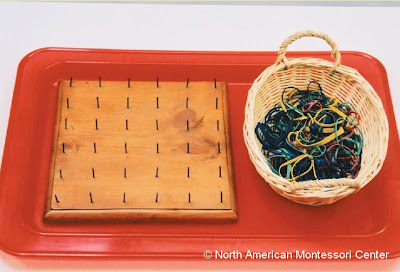The Importance of Practical Life Activities in the Montessori Elementary Classroom
In the 3-6 Montessori classroom, children freely choose Practical Life activities throughout the day. In the Montessori elementary classroom, time for Practical Life activities becomes more limited. Elementary children are also involved in the Practical Life activities as soon as possible, as they are eager to participate and practice their newly acquired skills. The focus of the activities is on doing and making real things. Some activities may be done individually, such as latch hooking a rug or creating designs with an elastic band board. Others such as making muffins or planting a garden are best done as a group. Unlike Practical Life activities in the 3-6 classroom, elementary activities can be somewhat lengthy and complex and should be broken into stages over time.The Value of Continuing Practical Life Activities
Just as Practical Life activities in the Montessori preschool help build independence and increase concentration, elementary Practical Life activities allow elementary students to benefit by allowing them to develop and practice skills that will help them not only in other parts of the curriculum, but throughout life as well. Elementary Practical Life activities also benefit special needs students and those who find it difficult to transition into the elementary classroom. Here are some of the benefits associated with incorporating Practical Life activities into the Montessori elementary classroom:
- Expanded concentration
- Following step-by-step instructions
- Attention to detail
- Practicing sequencing
- Developing logical thought patterns
- Increasing sense of independence
- Improving fine motor skills
- Restoring energy by choosing activities which calm and refresh
- Developing a sense of pride in a job well done
- Showing respect for self, classmates, teachers, and the environment
- Developing self-esteem, self-confidence, and self-control

- Memory and perception
- Motor skills and creativity
- Food preparation
- Fabric crafts
- Planting
- Social graces
- Larger, special projects, such as a poetry recital or Mother's Day tea
Read our related blog: The Importance of Practical Life Activities in the Montessori Preschool Classroom
As much as possible, NAMC’s web blog reflects the Montessori curriculum as provided in its teacher training programs. We realize and respect that Montessori schools are unique and may vary their schedules and offerings in accordance with the needs of their individual communities. We hope that our readers will find our articles useful and inspiring as a contribution to the global Montessori community.
© North American Montessori Center - originally posted in its entirety at Montessori Teacher Training on Wednesday, June 11, 2008.
© North American Montessori Center - originally posted in its entirety at Montessori Teacher Training on Wednesday, June 11, 2008.



0 comments:
Post a Comment
Have questions or comments? Let us know what you thought about this article!
We appreciate feedback and love to discuss with our readers further.